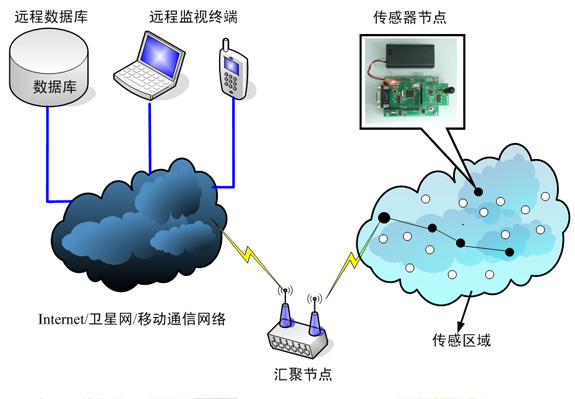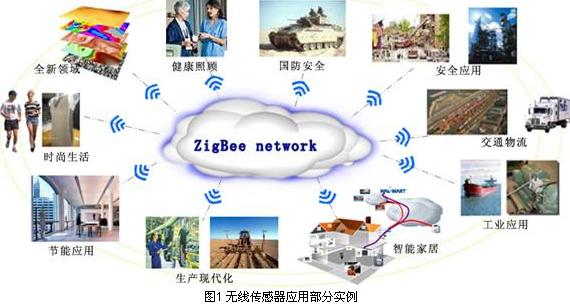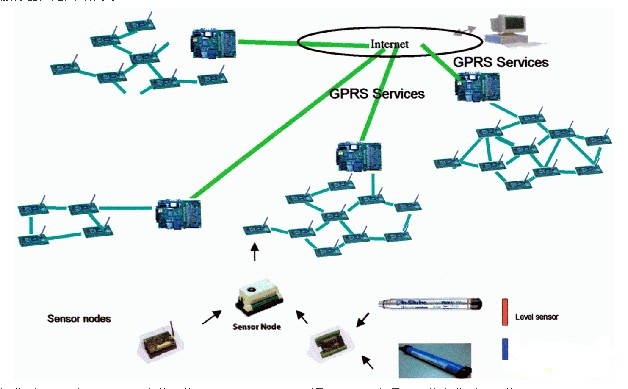Wireless sensor networks begin with sensor networks, and sensor networks have gone through four developments.
The first generation of sensor networks appeared in the 1970s, using traditional sensors with simple information signal acquisition capabilities, using single-hop transmission, connecting sensor controllers to form sensor networks, and second-generation sensor networks having access to multiple information signals. Comprehensive capabilities, using serial and parallel interfaces (such as RS-232, RS-485) connected to sensor controllers to form a sensor network that integrates multiple information; third-generation sensor networks appeared in the late 1990s and early 2000s , Using sensors with intelligent ability to acquire a variety of information signals, using fieldbus to connect the sensor controller to form a local area network to become an intelligent sensor network; the fourth generation of sensor networks is under research and development, and is currently being formed and put into use. The product has not yet appeared. With a large number of sensors with multi-function and multi-information signal acquisition capabilities, they use self-organizing software to run into the network and connect to the sensor network controller to form a wireless sensor network. The wireless sensor network introduced in this book refers to the fourth-generation sensor network.

Network architecture is a collection of network protocol layers and network protocols. It is the definition and description of the functions that the network and its components should accomplish. For wireless sensor networks, their network architecture is different from traditional computer networks and communication networks. The network architecture consists of three parts: hierarchical network communication protocols, sensor network management, and application support technologies.
The layered network communication protocol structure is similar to the TCP/lP architecture; the physical layer provides a simple, stable signal modulation and data transmission and reception technology for the system; the data link layer is responsible for route generation and routing, and coordinates access to the wireless medium; The layer is mainly responsible for data transmission control, minimizing collisions between adjacent nodes and ensuring communication service quality: if necessary, the transport layer can maintain data flow for the sensor network or ensure connection with the Internet; the application layer provides for different applications. A relatively unified high-level interface; power, mobility, and task management are responsible for the monitoring of sensor nodes' energy, movement, and task assignments, helping sensing nodes to coordinate sensing tasks and minimizing overall system power consumption.

The sensor network management technology mainly manages the sensor node itself and the user's management of the sensor network; the energy management platform manages the nodes how to use energy and saves energy as much as possible; the mobile management platform detects the movement of the sensor node and maintains the route to the sink node, making The sensor node can dynamically track the location of its neighbors; the task management platform balances and schedules the monitoring tasks within a given area. Based on layered protocols and network management technologies, application support technologies for sensor networks are supported.
In the three parts of the wireless sensor network architecture, the current development mainly focuses on several aspects. At the protocol communication layer, the main research focuses are the data access layer MAC (Multiple Access Control) protocol and the network layer routing protocol; Network management technology layer, the main research direction is the collection of data management, energy-saving issues and the realization of network communications security; in the network support technology layer, the main research point is to solve the problem of node positioning, time synchronization technology and user application interface The realization. Among these, the study of the agreement and the realization of energy conservation are complementary.

So far, the standardization of communication protocols at all levels of wireless sensor networks is still under research and development. Two important achievements in the standardization of wireless sensor networks are: IEEE 802.15.4 low-speed wireless personal area network protocol (ZigBee Alliance is the marketing promotion and compatibility certification organization of the protocol) and IEEE 1451.5 wireless smart sensor interface standard. The standard for the interconnection of wireless sensor networks and IPv6 networks—the 6LoWPAN standard has been drafted by the 6LoWPAN working group, but the official standards are still being revised.
For more information on background music systems and health and safety products , click here!
Discectomy Instrument,Drived Discectomy Device,Decrease Disk Pressure,Cervical Disk Discectomy
Dragon Crown Medical Co., Ltd. , https://www.dragoncrownmed.com